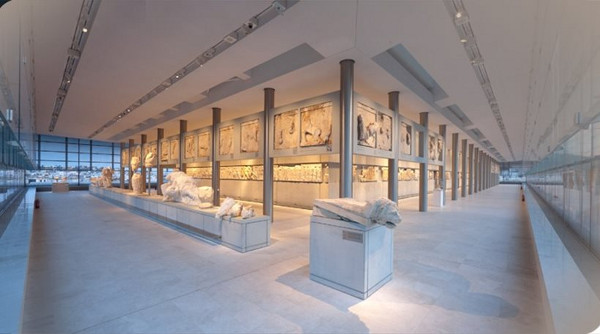
Greece stands to profit from its historic monuments – and discoveries like that at Amphipolis prove that new sources of revenue are available just under our feet. And yet revenues from visits to museum and archaeological sites were remarkably low in 2013 – approximately 47 million euros. Meanwhile, the number of tourists who came to Greece to admire its cultural heritage – and not its beaches – reached just 11.5 million, according to data provided by the Hellenic Statistical Authority.
France is an intriguing counter-example. Last year, museums in France attracted 73.1 million visitors, including 9 million tickets for the Louvre alone. Even the British Museum in London, which maintains its allure primarily for its collection of Parthenon Marbles, brings in upwards of 5 million euros each year.
Poor revenues for the Acropolis Museum
Greece’s own Acropolis collection fairs comparatively poorly. Though hailed as one of the world’s best museums – TripAdvisor recentled ranked it 8th on its list of best museums in the world – tourist traffic at the Acropolis Museum still falls well-short of expectations. Since its 2009 opening, total Acropolis Museum revenues have reached just 6.5 million euros. And although tourist travel to Greece is on the rise, from April to June of this year the Acropolis Museum issued just 393,000 tickets – up a mere 71,000 from last year. According to official data, the Museum attracted only 1.1 million tourists from June last year to May of this year.
Coffee costs more than the ticket at the Museum
One fundamental problem seems the cost of the Acropolis Museum ticket. It’s too low; five euros earns one admission to the Acropolis Museum, while 12 euros earns entry for the museum, the ancient Roman Agora, the Kerameikos, as well as the National Archaeological Museum. For nine euros, visitors can see Delphi and the museum of Delphi; the same price applies to ancient Olympia. These are miniscule in comparison to ticket prices in other museums through Europe – the Madame Tussaud Museum in London, for instance, where tickets cost 35 euros. And although entrance to the British Museum is free for permanent exhibitions, the Museum’s annual income still rivals that of the Acropolis Museum, considering its vast profits from memorabilia.
Greece’s poor commercial services and infrastructure
In fact, in the UK as a whole, just 24% of museum revenues come from ticket sales. Far more profit is derived from the sale of souvenirs, admission to various special events and the overall commercialization of the country’s monuments. In France, ticket sale revenues are closer to 65%, but in Greece it exceeds 85%. While there is an opportunity to increase ticket prices, there is also more room to exploit museum store merchandise.
Furthermore, the McKinsey study has shown that Greece lacks any sort of pricing hierarchy in its tickets – annual subscriptions, for instance, or discount tickets for frequent visitors. Moreover, electronic ticket purchases are unavailable at most sites, resulting in long queues that turn potential visitors away.
See all the latest news from Greece and the world at Greekreporter.com. Contact our newsroom to report an update or send your story, photos and videos. Follow GR on Google News and subscribe here to our daily email!



